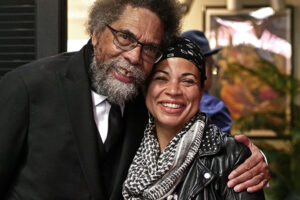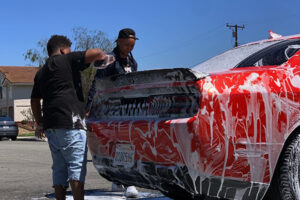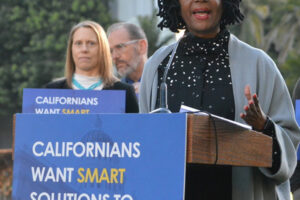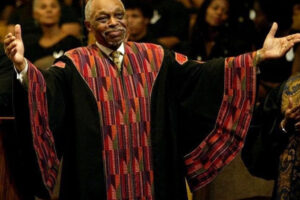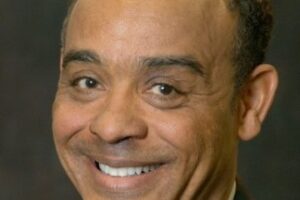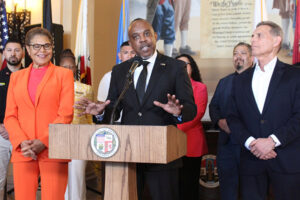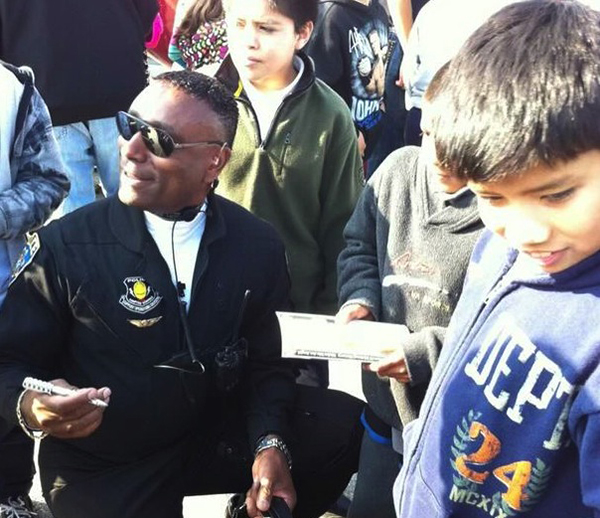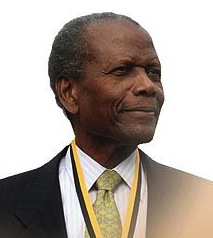By Darlene Donloe
Conbtributing Writer
Tomorrow’s Aeronautical Museum in Compton is a facility known for giving children the space to fly high, literally and figuratively.
With an aim to reduce the incidence of drug abuse, juvenile crimes and gang violence, Robin Petgrave opened the museum to introduce aviation training programs to young people. Through interactive school visits and flight training sessions, it aims to secure the future employment prospects of deprived and at-risk children. Some of the programs include the Aero-Squad nonprofit school, Positive Vibrations youth mentoring and Aviation Explorers.
With the support of the Los Angeles Chapter of Tuskegee Airmen, the Tomorrow’s Aeronautical Museum offers a public museum exhibit to continue the legacy of aviation pioneers within the community.

On display at the museum are historic photos of the Tuskegee Airmen and Bessie Coleman, Vietnam War-era helicopters, a T-38 Talon used as a trainer for jet pilots, and experimental aircraft. It also has exhibits, centers, plus operating and static display aircraft.
Highlights include the Sky Lab computer center, Tuskegee Airmen Learning Center, Cessna airplanes, Augusta 109 helicopter, Pitts bi-plane, Hughes Aircraft HS-376 satellite, F-16 Cockpit mock-up, S-3 Part Task Trainer, UH-1 Huey Helicopter and a T-28 Trojan.
It all started decades ago when, as a child, Petgrave, was “inquisitive about a lot of things.”
He wondered how buses turned around, and where trains ended up.
One day the bus he was riding ended up at Boston’s Logan Airport, where Petgrave took the opportunity to watch the planes take off and land.
“Whoa,” he remembers thinking. “I was looking at the pilots. I thought that was so cool. I looked at the families getting off the plane and liked how aviation brings people together and lets them go see things.”
But when he saw a helicopter, things changed.
“All I saw was the helicopter,” Petgrave said. “It came down and floated above the ground. I’m like, holy s—. When it set down, a blonde woman got out of it. I thought, ‘wow, it’s cool and it comes with a blonde.’ Wow! Then, woosh, the helicopter took off like Superman. It was the coolest thing I’d ever seen.”
On one of his high school career days, Petgrave was asked what he wanted to be. When he mentioned becoming a pilot, he was told he would first have to go to the military.
“That was it for me,” said Petgrave, who decided to move to California to pursue an acting career, joining the Screen Actors Guild in 1979. “Eventually, I took a ride on a helicopter and asked the pilot, who was about my age, if he had gone into the military early. He said, ‘No, I just took lessons.’ I thought, ‘wow, it’s possible.’”
Petgrave eventually joined the Civil Air Patrol. He also excelled in track, which earned him a scholarship to the University of Connecticut where he graduated with a fine arts degree in acting and a specialization in communications. He then attended flight school and obtained his commercial helicopter pilot license and certified flight instructor’s certificate.
One thing led to another and with $300, he launched his own helicopter company. In 1997, he founded Torrance Aeronautical Museum. He then moved the nonprofit and renamed it Tomorrow’s Aeronautical Museum because he wanted “to make a difference.” And he’s done just that.
Since the museum took flight, more than 6,000 kids have come through the program.
Kids learn to be pilots and mechanics. Some of the kids have shown an interest in entertainment.
“The museum introduces kids to different career paths,” said Petgrave, who has a son and a daughter. “They can do anything. Some of the kids that came through this program are now engineers, pilots and doctors. The program has changed lives in the community. It has inspired lots of kids all over the world. “Eight of the kids have set aviation records. One kid flew from here to Canada. I just want kids to be whatever they want to be.”
Every day after school, Petgrave, a motivational speaker through his “Positive Vibrations’ program, said between 40-150 kids between the ages of 8 and 21, converge on the museum to be taught, voluntarily, by the veteran participants who have called the museum home for years. About 40% of the kids are Black, 40% Hispanic and the rest fall under “other.”
“I’ve built a system that is self-sustaining,” Petgrave said. “I don’t have to be there every day anymore. The kids I inspired are now inspiring others. Some kids are at-risk but we don’t care what they’ve been into. We care what they want to do now.”
The museum, which pays homage to the legacy of the Tuskegee Airmen, is home to the Aero Squad Afterschool Program, Positive Vibrations Outreach Visits, and Aviation Explorer Post 409.
He calls it Tomorrow’s Aeronautical Museum because “what I’m doing today is going to make history tomorrow.”
Petgrave, 59, describes the facility as “A living classroom in South Los Angeles where kids come and get exposed to everything aviation-related and in the STEM (science, technology, engineering and math) discipline. We bring aviation history to life while empowering the dreams of youth to take flight. This museum is many things to many people.”
Students come after school to do homework or to find a mentor. Good grades and completed chores around the facility earn points for flying lessons at Compton’s Woodley Airport.
“This is a place where kids can learn about diversity in aviation and the African-American contributions to aviation,” said Petgrave, who also does production work, aerial filming, aerial photography, sightseeing flights and more. “We want them to know whose shoulders they are standing on. They learn about this place, and I help them be what they want to be.”
Tomorrow’s Aeronautical Museum offers flight training at Compton Woodley Airport — with a 7,000- square-foot hangar, a computer flight simulator room using a Microsoft Flight Simulator, a preflight briefing area and a ground school center.
Petgrave, who was born in Jamaica as the youngest of five siblings and who grew up in Belmont, Massachusetts, said the museum is “not just about flying.”
“We support the academic achievement of youth in the belief that education is the key to opportunity and prosperity for the individual and our community,” he said.
Petgrave said some of the 11th graders designed and built a liquid-fueled rocket, while others who have an interest in aviation, have decided to become chefs.
“Whatever it is they want to do,” we want to help them get there,” said Petgrave, who also owns Celebrity Helicopters, a helicopter sightseeing tour service housed in the same hangar compound as the museum. Proceeds from the tour service go to the museum’s programs.
Although he’s been recognized and honored for his work, even appearing on Oprah, Petgrave doesn’t care about receiving accolades for what he’s brought to the community.
“I care about them learning,” he said. “I am providing a service. That’s the best thing ever. The fact that many of the kids come back and more are coming, means this works.”
Tomorrow’s Aeronautical Museum, 961 W. Alondra Blvd., Compton. Call (310) 618-1155 or (877) 999-2099, for hours.
“Spotlight on L.A.” is a new feature profiling little known places within the city. To propose a location for “Spotlight on L.A.,” send an email to dwanlass@wavepublication.com.
Darlene Donloe is a freelance reporter for Wave Newspapers who covers South Los Angeles. She can be reached at ddonloe@gmail.com.

